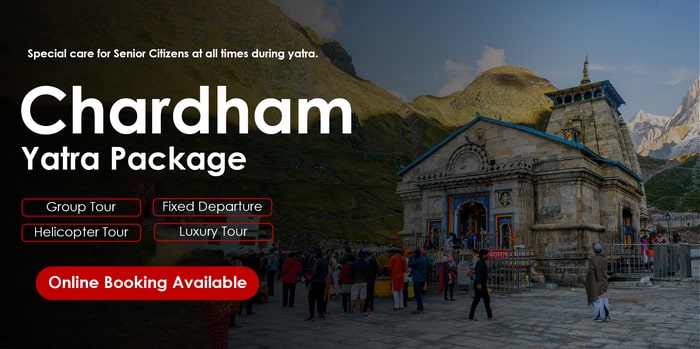Last Updated on January 18, 2025
Also referred to as Jumna or Jamna (not Jamuna of Bangladesh), this river is famed for being the 2nd largest tributary of the Ganga and the longest tributary in India. The river emerges from the slopes of the Champasar glacier in the Bandarpoonch Parbat at an elevation of 8,387 meters above sea level. This place marks the lower Himalayan region of Devbhoomi Uttarakhand. The holy river travels over a distance of 1,376 km and merges with the holy river Ganga at the Triveni Sangam in Prayagraj, which is one of the holiest locations in India and the site for the famous Kumbh Mela, which takes place once every 12 years. All this shows that the river holds an incredible religious and holy place in the hearts of devout Hindus.

About Banderpooch Peaks
Literally translating to ‘tail of the monkey’ and located in the Garhwal division of the Himalayas, this mountain massif is named and dedicated to Lord Hanuman. It is strategically situated along the western edge of the high Himalayan ranges and is covered in white snow, making a visit here feel like a dream come true. Lying within the famous Govind Pashu National Park and Wildlife Sanctuary, it is also a major watershed for the Yamuna River, whose source can be traced back to above and beyond the Yamunotri temple shrine. The peak was first summited by Maj Gen Harold Williams in 1950, which also included the legendary mountaineer Tenzing Norgay. The place forms the perfect destination for outdoor adventure seekers and fun-seeking travelers.
Course of Yamuna River
From its source in the Champasar glacier, the river flows 200 km southwards, making its way through the lower Himalayan region as well as the Shivalik ranges. Near Naugaon, you can witness some terraced land formations which are believed to have been formed here over a long period of time. The Tons River, a center for adventure water sports activities, is the largest tributary and drains a massive portion of the upper catchment area. It is said to hold more water than the main stream of the river. Rising from the Har Ki Dun valley, it later merges near Dehradun with Kalsi. Gracefully making its way downwards from Dehradun, it then crosses the famous Sikh pilgrimage destination of Ponta Sahib and finally reaches Tajewala in Haryana.
During the dry season, the stretch of river between Delhi and Tajewala Dam completely dries up. The Yamuna defines the border between Uttarakhand and Himachal Pradesh, and in between Haryana, UP, and Delhi. It runs almost parallel to the Ganga once it enters the Indo-Gangetic plains. This land in between is the Ganges-Yamuna doab region, covering an area of 69,000 sq. km.
Religious Significance
Just like other rivers in India, the Yamuna river holds a great deal of religious and sacred significance in the lives of the Indian population. The river is named after the sister of Yama, i.e., Yami, who also happens to be the daughter of Surya. She is worshipped everywhere the river flows. The river is also connected to the religious beliefs about Lord Krishna. As per the various Hindu texts, especially the Puranas, this river is mentioned. It is said that when Lord Krishna was being taken across the Yamuna river after his birth, the river parted into two to make way for Vasudeva carrying Krishna’s basket. Since then, Krishna spent his childhood and adolescent years by the river, before finally meeting her in the forest when he went to meet the Pandav brothers.
Places to Visit Around Yamuna River
- Yamunotri: The temple of Yamunotri is the starting point of the holy Char Dham Yatra. This tall temple marks the origin point of the holy Yamuna River, with cascading waterfalls surrounding the region. Goddess Yamuna is worshipped here in the form of a glistening black idol. People walk for 7 km on a narrow lane hanging by the mountain, making the journey to the temple an exhilarating experience.
- Vrindavan: This is one of the holiest towns in Uttar Pradesh, visited by devotees of Krishna from all over the world. The significance of this place is due to the fact that Krishna spent his childhood here, and there are several temples dedicated to him. Along with this, Radha also plays an important role here, and several temples are dedicated to her. Prem Mandir is a landmark temple here.
- Mathura: The sacred city of Uttar Pradesh is famous for being the Sri Krishna Janmabhoomi, the birthplace of Lord Krishna. The Yamuna river flowing through it is adorned with 25 ghats. The spiritual aura here is impeccable, and the atmosphere is filled with an incredible sense of devotion. You can take a dip in the river water here, which is believed to free you from the fear of death.
- Triveni Sangam, Allahabad: This is probably one of the holiest confluences in India and the site of the Mahakumbh Mela. This place is where the holy rivers of Ganga, Yamuna, and the mythical river Saraswati meet. Taking a dip in the holy water here is considered to free you from the karmic cycle of birth and rebirth.
Yamuna Pollution
Rivers in India are considered to be extremely sacred and are treated with great respect wherever they flow. Once the river boasted of its clear blue water, but now it has turned into one of the most polluted rivers in India, especially around the capital – New Delhi. The pollution has been attributed to 58% of the waste being dumped into this river. Every day, this pollutant count increases at an alarming rate. The worst part? 70% of the Delhi population drinks water treated from the Yamuna. To add to the problems, 15 out of 32 sewage treatment plants are working below their full capacity. This is only helping increase the river’s pollution. A serious step in conservation needs to be taken immediately in order to maintain the sanctity and respect the historical significance of this river.




 Call
Call WhatsApp
WhatsApp Enquiry
Enquiry
There should also be programme like yamuna cleaning act and the river yamuna is a very religious river and people are dumping garbage in it.
क्या इस देश का हर नागरिक यमुना नदी को पवित्र करने का संकल्प करे